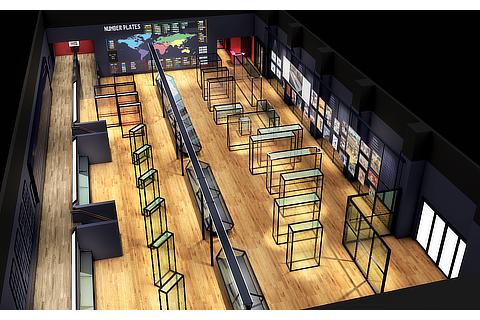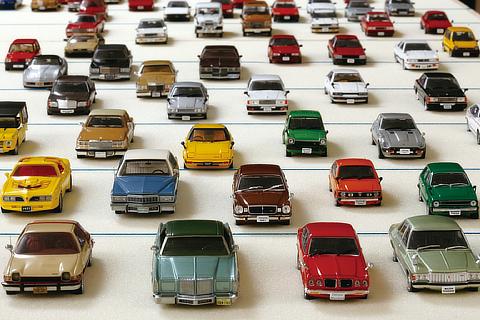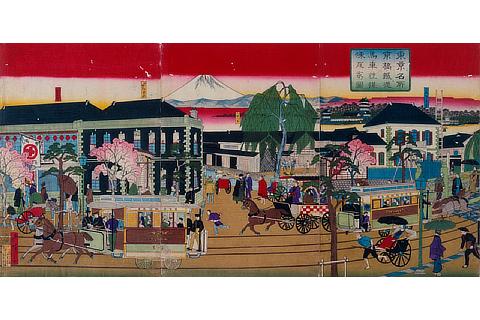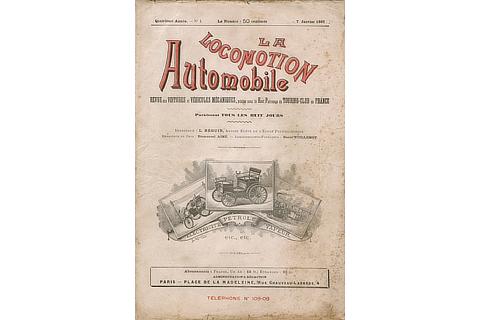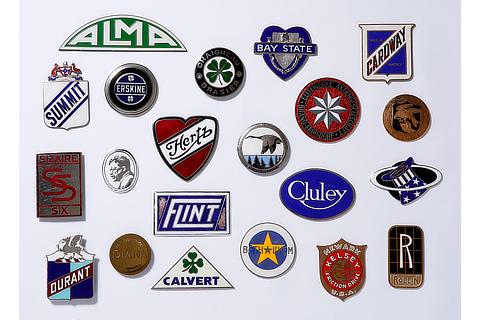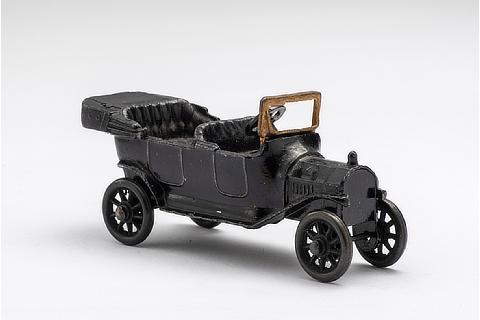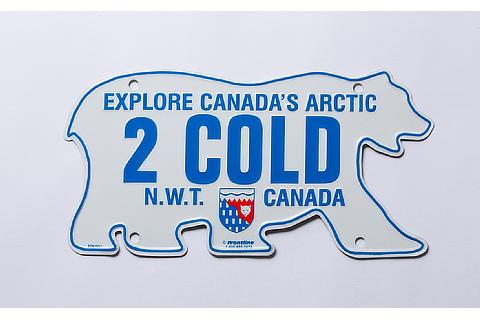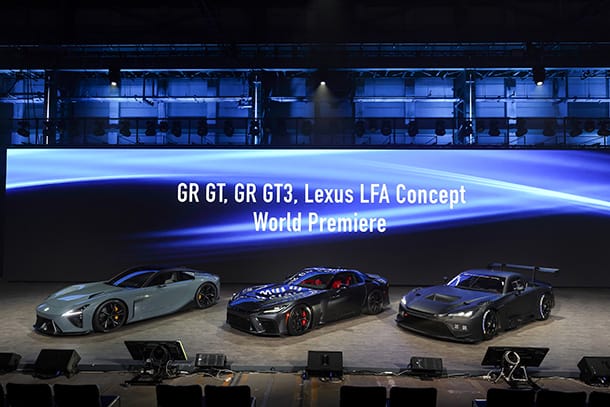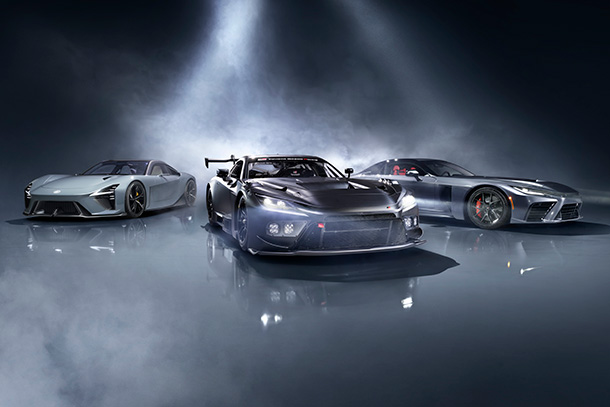Mar. 13, 2019
Toyota Automobile Museum Marks 30th Anniversary with Launch of "Automobile Culture Showroom"
Nagakute City, Japan, March 13, 2019―The Toyota Automobile Museum, a Toyota Motor Corporation cultural facility located in Nagakute City, Aichi Prefecture, announces today the opening of the "Automobile Culture Showroom" on April 17. The museum has been revamping its permanent exhibits in stages since 2015 in preparation for its 30th anniversary this year.
Since opening in April 1989, the museum has been collecting, in addition to automobiles (actual vehicles), reference materials on automotive culture in Japan and around the world. The collection contains about 200,000 items comprised of books, magazines, and catalogs, and about 15,000 additional cultural literature items. Of this collection, a total of about 4,000 cultural items under the theme of Mobility and Culture will be on display.
An exhibit of about 140 automobiles tells the history woven by automobile makers, following the trajectory of how the automobile was received by society after its launch into the world, and its evolution to date. This exhibit succeeds in the telling of a story without the use of a single life-size vehicle. With 800 miniature cars as the centerpiece display, various artifacts, including a poster advertising the world's first motor show and the world's first miniature die-cast model cars, provide a visual narrative of the diversely woven fabric that is automotive culture.
Exhibition zones
- Vehicle culture as seen in early printed matter (nishiki-e, flyers, uchiwa-e, sugoroku) <Approx. 40 items>
-

- Nishiki-e (1882, Japan)
As Japan opened its doors to the world, the Meiji Restoration ushered in various vehicles that did not exist prior to the Edo Period, such as horse-drawn carriages, rickshaws, and railway cars. This zone uses nishiki-e and other artifacts that depict the modernization of transportation in vivid colors.
- Automobiles and publications (automotive magazines and catalogs) <Approx. 300 items>
-

- World's first automobile magazine
This zone demonstrates how automobile magazines have changed since the publication of the world's first automobile magazine, La Locomotion Automobile, and showcases the covers of 64 magazines that were first published in Europe, the U.S., and Japan from 1894 to 2000. About 150 catalogs will be exhibited by year.
- Automobile posters <Approx. 30 items>
-

- Poster for the Paris Auto Show, the world's first motor show (1895, France)
This zone features a poster panel exhibit selected from the museum's collection of about 300 posters. The posters are exhibited by themes on automobile manufacturers, automotive parts and accessory manufacturers, motor shows, and more. About 30 posters will be exhibited, including a poster for the world's very first motor show.
- Car badges <Approx. 400 items>
-

- Car badges
The birth of the automobile spawned the establishment of countless automakers, which peaked at almost 500 companies each in Europe and the U.S., although more than half of these manufacturers went out of business during the Great Depression of 1929. Car badges represent the brand image of an automobile manufacturer, and the 400 or so on display in this zone embrace the passion of the individuals who played a part in producing automobiles over the decades.
- Car mascots <Approx. 180 items>
-

- Victoire - Car mascot by René Lalique (1928, France)
From around 1910 to the early 1930s, car mascots, also known as hood ornaments, were used for decorating cars, serving in part as a means of creative expression in the form of a symbol, lucky charm, or even fashion statement. The permanent display of all 29 types of glass mascots produced by French glass artist René Lalique is particularly rare, not found anywhere else in the world.
- Automobile stamps <Approx. 1,200 items>
-

- World's first automobile stamp: Columbia (1901, U.S.)
Stamp collecting has long been enjoyed as a hobby around the globe, including in Japan, with popularity rising in the 1950s and 1960s. As stamps depicting automobiles increased in popularity, so too did the number of stamps featuring beautifully rendered classic cars and popular car models, with issuance of over 15,000 kinds of automobile stamps worldwide. This exhibit showcases about 1,200 items, including the world's first automobile stamp.
- Toy automobiles, games <Approx. 640 items>
-

- World's first miniature die-cast model car: Ford Model T (1914, U.S.)
This zone exhibits about 640 toys that were made in Japan and exported to Europe and the U.S. in the 1950s, including tin toys, plastic model kits, slot cars, mini 4WD cars, and video games. Noteworthy items include the world's first miniature die-cast model car and the world's first radio-controlled car.
- License plates from around the world <Approx. 100 items>
-

- Canadian license plate
As increasing numbers of people came to own automobiles after the gasoline-powered motorcar was invented in the late 19th century, the use of license plates to identify individual vehicles gradually spread worldwide. This zone introduces license plates from cars driven in various countries around the world.
- Literature, manga, cinema, music <Approx. 130 items>
Through the years, automobiles and automobile culture have been portrayed in art and literature to convey various meanings, ranging from a means for mobility, a symbol, status, lifestyle, motorsports, and more. This zone is dedicated to works of literature, manga comics, cinema, music, and other, in which automobiles play a central role.
As part of the renovation work carried out to commemorate the 30th anniversary, the Main Building is being renamed as the Automobile Gallery, which introduces the history of the automobile, and the Annex Building will be renamed as the Cultural Gallery, which houses the car culture reference room, feature exhibition zone, and a library.
To create an enjoyable and prosperous future mobility society, Toyota is currently transforming itself from a company that makes automobiles into a mobility company that provides a diverse range of mobility-related services and solutions. During this once-in-a-century transformational period in the automobile industry, we are taking a look back on our origins while we move toward the future of mobility, as we strive to become a museum that cultivates an automotive culture alongside car enthusiasts from around the world.
Please refer to the information below for details regarding the abovementioned exhibit, as well as the details of other related events.
- Automobile Culture Showroom
- Open
- April 17, 2019
- Place
- Toyota Automobile Museum, Cultural Gallery 2nd floor
- Automobile Culture Showroom special exhibits
"From the horseless carriage to the automobile"
"From the horseless carriage to the automobile"
- Duration
- April 17 through June 30, 2019
- Place
- Culture Museum 2nd floor, Exhibition rooms
- Details
- The horseless carriage took the world by surprise when it first appeared, but it gradually became a part of people's lives, and went on to foster a unique automotive culture. The story of this phenomenon will be told via a display that includes actual vehicles, magazines, posters, and other automotive culture artifacts.
- Number of vehicles
- 8
- Vehicles
- De Dion - Bouton (1899, France), Locomobile Steamer (1899, U.S.), Cadillac Model A (1902, U.S.), Panhard et Levassor (1906, France), Renault Type DJ (1913, France), Renault 6CV (1925, France), Ford Model T (1927, U.S.), Rickshaw (Late Meiji Era, Japan)
- Driving demonstrations, "60's lightweight sports cars"
- Date and time
- May 25 and June 1, 2019
First session starts at 11:15 and the second session starts at 15:15
- Place
- P1 Parking area (free entry)
- Vehicles
-
Honda S800 (1967, Japan), Toyota Sports 800 (1965, Japan), Lotus Elite (1961, U.K.)Note: The content of driving demonstrations is subject to change; poor weather conditions may necessitate cancellations of or delays to scheduled events.
- Commemorative Appreciation Week (admission half price)
- Duration
- April 17-26, 2019
Media Guide
A press preview and opening ceremony will be held in the afternoon of April 16.
Reporters and journalists wishing to cover this event should notify us by April 10.
- Contacts
- Tomomi Sato, Nobuyuki Kawashima, Mikiko Yogo
Planning and Operation Group, Toyota Automobile Museum
(Tel: +81-561-63-5151 Email: xk-prmuseum@mail.toyota.co.jp)
Toyota Automobile Museum
-
- Location
-
41-100 Yokomichi, Nagakute City, Aichi Prefecture, 480-1118
(0.4 km west along Green Road from the Nagoya-Seto Road Nagakute IC (Exit 1))Tel: +81-561-63-5151; Fax: +81-561-63-5159
-
- Museum hours
-
09:30-17:00 (Last admission is 30 minutes before closing)Museum hours extended to 18:00 on May 3, 4, and 5. Closed Mondays (when a national holiday falls on a Monday, the museum will be closed on the following Tuesday) and during the New Year holiday.
-
- Admission fees
-
Adults 1,000 yen;
Senior citizens (aged 65 or over) 500 yen;
Junior and senior high school students 600 yen;
Elementary school students 400 yen;Group discounts available
Cultural Gallery 1st and 3rd floors are free-admission zones.


